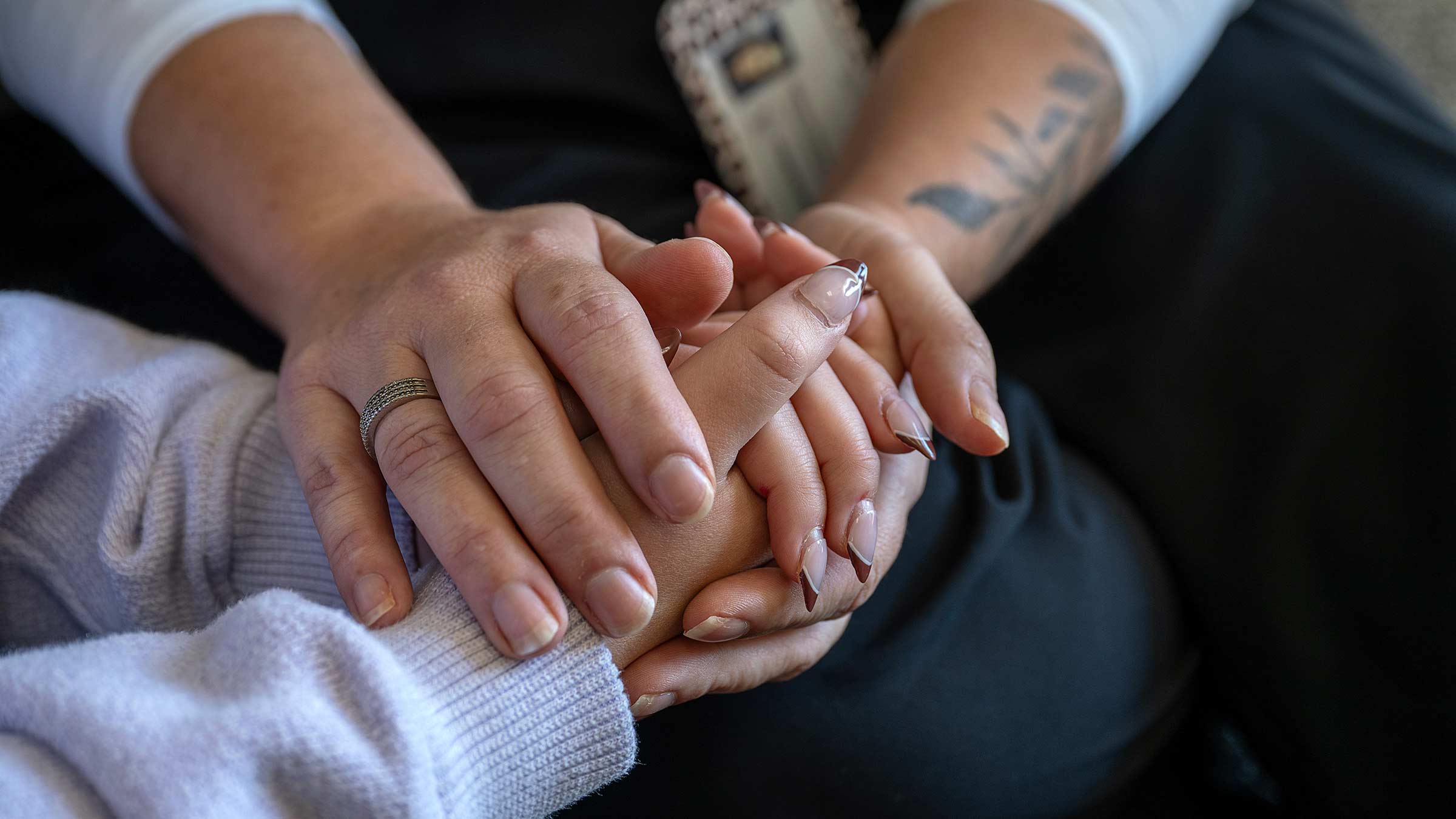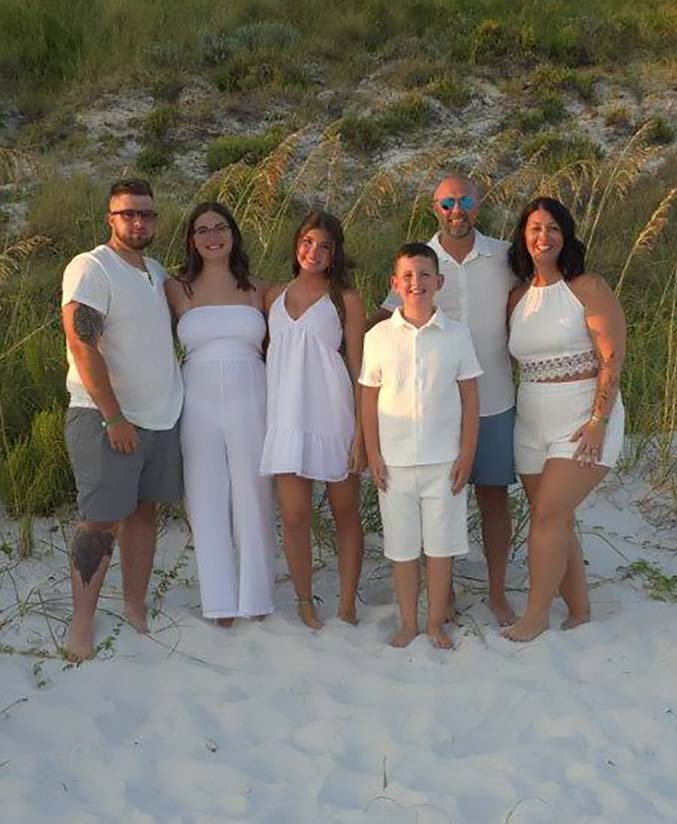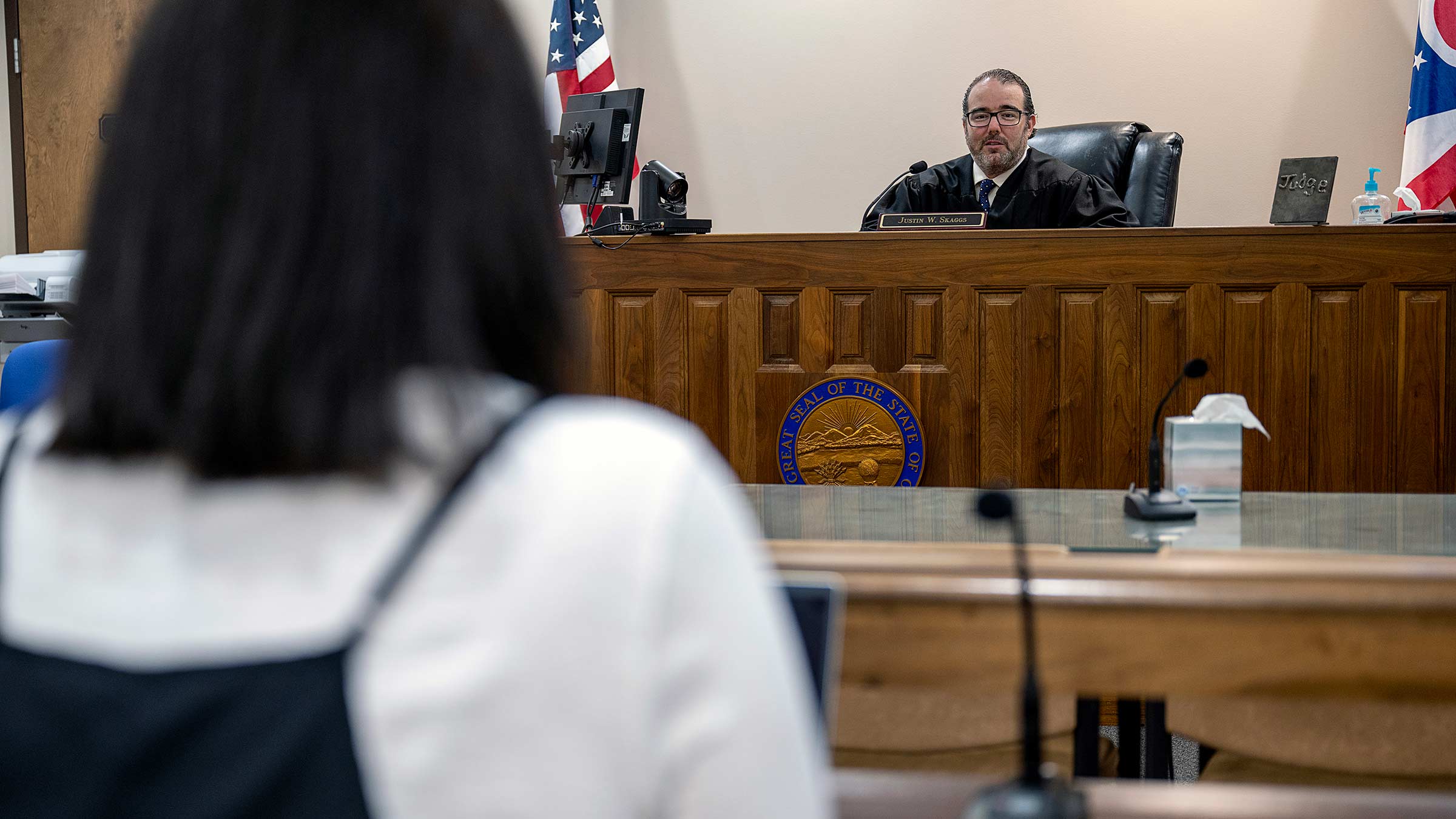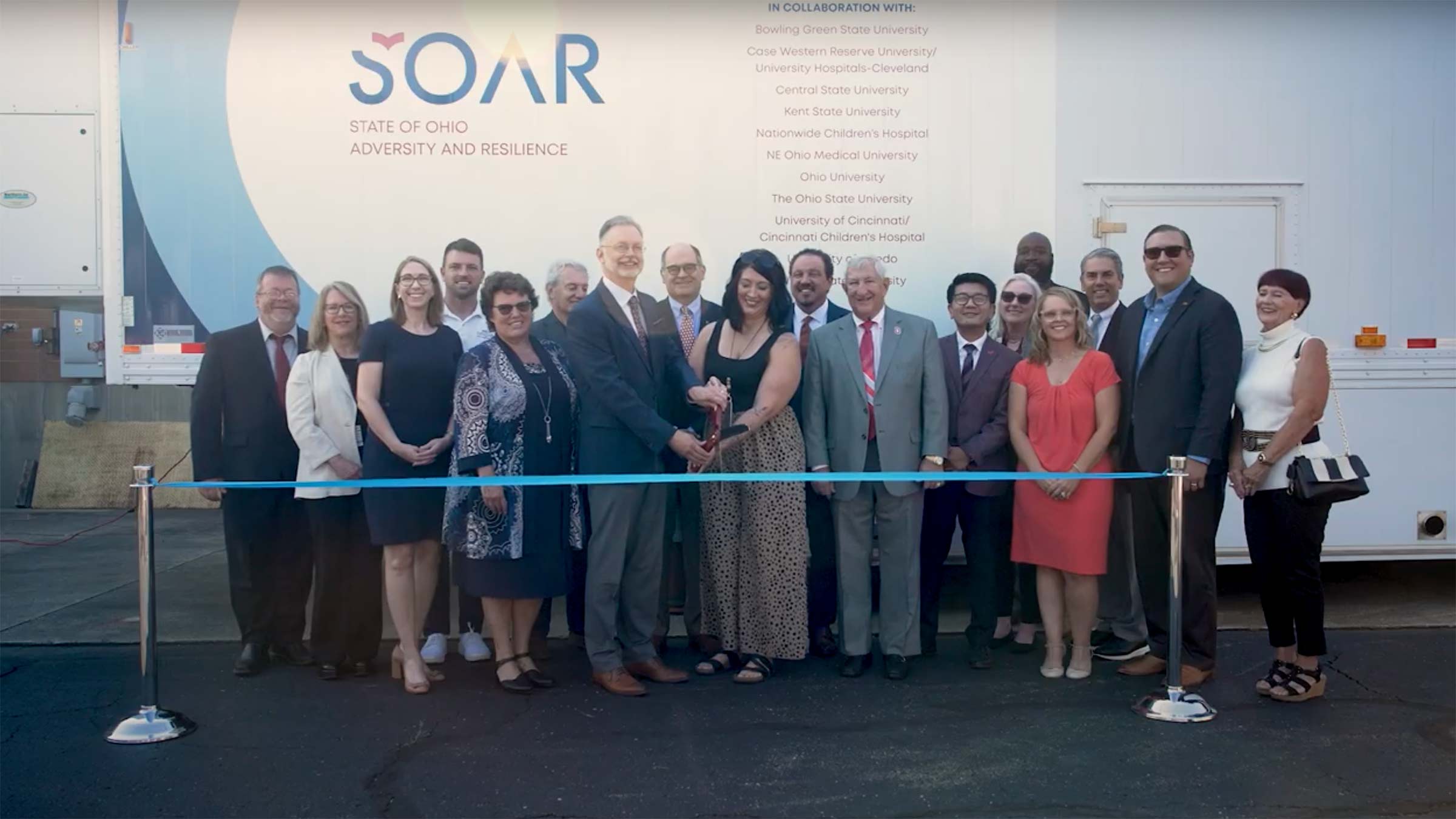From addiction to advocacy
Melissa Plummer’s recovery from drug addiction brings hope to young people in southern Ohio.
Teens call Melissa Plummer after they’ve cut their arm too many times or downed a bottle of prescription medication, or even just when they want to talk about nothing in particular.
Her voice is calm. A mother of three. She’ll listen, sometimes take them to a hospital and stay there, assuring them they can get over this, get on a better track. She’s been there and they know that, which is why they call.
As a high school student in southeastern Ohio, Plummer became addicted to Percocet, the pain medication prescribed to her after a car accident. Within months, she was able to quit on her own. But just a few years later, she met a man who led her back into addiction. Together, they shoplifted TVs, tires, tools, anything they could trade for painkillers, marijuana, cocaine or methamphetamines.
‘What have I done to myself?’
During her most desperate phase, she injected Oxycontin, a dozen or more shots into her arms. Every day. A shot when she got up; another every couple of hours. The highs kept her from feeling guilty for misdemeanor and felony theft offenses, for neglecting her young daughters, for disappointing her grandparents who raised her with strict rules — no smoking or drinking, be home by nine, even on weekends.
“I can’t tell you how many times I would think, ‘What have I done to myself? My kids? My grandparents?’” she says.

Now in recovery 13 years, Plummer works as a chemical dependency counselor in her hometown in Jackson County, south of Columbus. Her own experience with addiction gives all the more credibility and empathy to her work with young people struggling with drugs or alcohol, and oftentimes a mental illness, just as she did.
Looking for clues to recovery in southeast Ohio
Why people develop mental illnesses and addictions is being researched in a statewide study led by The Ohio State University Wexner Medical Center and The Ohio State University College of Medicine and involving other public universities across the state.
Southeast Ohio is a key location in that study. The region has experienced a disproportionately high number of overdose deaths from opiates in recent years compared to the rest of Ohio.
The State of Ohio Adversity and Resilience (SOAR) Study has two main aspects: a statewide survey about financial, physical and emotional challenges, as well as coping measures and mental health; and a brain health study to see how genetic and biological factors contribute to mental illness and addiction in families.
The SOAR Study has been enrolling residents in Jackson County and neighboring counties to participate in a phase of the study involving brain scans and blood tests on volunteer participants.

‘We are moldable’
Researchers are looking for biological similarities and differences within families that might account for mental illness and addiction as well as what gives some people more resilience. They hope to discover risk factors to help people break the chain of emotional distress that can continue from generation to generation.
“We want to understand why one person has the coping skills to manage adversity and another one struggles even within the same family, even within the same community.”Scott Langenecker, PhD, a professor and vice chair of research for the Department of Psychiatry and Behavioral Health at the Ohio State College of Medicine
Equally important is finding out what leads people to bounce back from trauma and adversity, a critical aim of the study.
“We are not rock. We are clay. We are moldable,” Dr. Langenecker says. “We are capable of learning new things. We can learn to build resilience within ourselves as Melissa Plummer did, within our families and within our communities.”
Incarceration leads to a new beginning
Nothing could be worse than going to prison, Plummer had thought. Instead, it was a turning point. She had been to rehab. She had been to jail — several times. But going to prison for seven months stopped her from ever using drugs again.
She was sent to prison in 2012, having violated the terms of her probation for felony theft. She had missed a meeting with her probation officer and failed a drug test.
In prison, with so much time to think and away from the drugs that dulled her feelings and the men who had drawn her deeper into trouble, Plummer made a decision.
“I kept telling myself, ‘I can do better than this,’” Plummer says.
After prison, she moved in with her grandparents and gradually regained trust with her family members including her mom, who had struggled with mental illness, and her dad, who had been addicted to painkillers.
 Plummer had to regain trust in the community as well. She walked into the CVS and the local grocery store, where she had stolen makeup, deodorant and food, to say she had been sober for seven months and ask could she please shop there again? They let her.
Plummer had to regain trust in the community as well. She walked into the CVS and the local grocery store, where she had stolen makeup, deodorant and food, to say she had been sober for seven months and ask could she please shop there again? They let her.
In time, she got a job. She moved into her own home. She got back custody of her two daughters and had a third child, a son. To all of her children, she’s kept her promise: to be a role model and to always be there for them, including at every one of their teams’ games.
In 2018, she married a man who’s supportive and kind, who has never done drugs and has no addictions.
Overcoming the past
What surprised Plummer and her family members is that staying away from drugs after leaving prison has not been difficult, she says. She doesn’t have cravings. She doesn’t get triggered even as she helps many young people addicted to the same drugs that once controlled her.
“It’s something that has left my mind,” she says of her past obsession with drugs. “I just don’t think about it.”
Now 44, Plummer models the resilience that researchers of the SOAR Study want to better understand and spread. She’s able to support and influence so many young people — not despite her criminal offenses and time in prison, her years of stealing and getting high — but because of it.

“People ask me what gave me the resilience to get through all of this,” she says. “All I can say is that if it wasn’t for the support of my family, I’d be dead.”
It’s been over a decade since her last high, but Plummer is still careful about taking any medication, including prescription medicine for anxiety and depression.
During her first year after prison, she dreamed one night she had relapsed. Waking up in a panic, she turned on the light and ran her hands down her arms, feeling for holes, looking for spots where a needle may have gone in. She saw only scars that were old and healing. I’m not going back to jail. I’m not going to lose my family again. She cried in relief.
Finding her purpose in substance abuse counseling
Throughout her time in prison, Plummer’s family members stayed in contact with her through calls and visits. When she got out of prison, they offered her sage advice: cut ties with everyone you did drugs with. This time, she listened.
It’s the very same advice she gives the young people she now counsels.

“I try to give them the knowledge that you don’t have to go down this path,” she says.
She calls them “my kids.” She gives them her phone number. Though her boss and coworkers tell her she shouldn’t accept calls after hours — that she needs to set boundaries — when a teen calls, she picks up her phone or calls them back. Every time.
“If a child is reaching out to me, I’m going to answer that phone. I can’t help it. A lot of these kids are alone,” Plummer says.
Plummer has been upfront with her three children and the young people she works with about all the years she felt her only option was the next high. She doesn’t want them to make the same mistakes. And to anyone who has, she knows she can’t just say: “Quit.” That didn’t work for her. Recovery, she knows, is a process, a reckoning — and sometimes it comes slowly.
“My goal is to have a purpose, and for them to say, ‘Look what she’s done in her life. Look what she’s overcome.’ So they know they can, too.”






